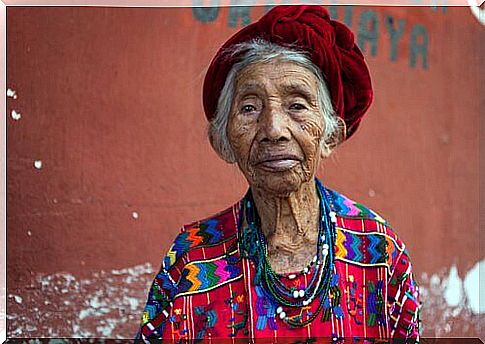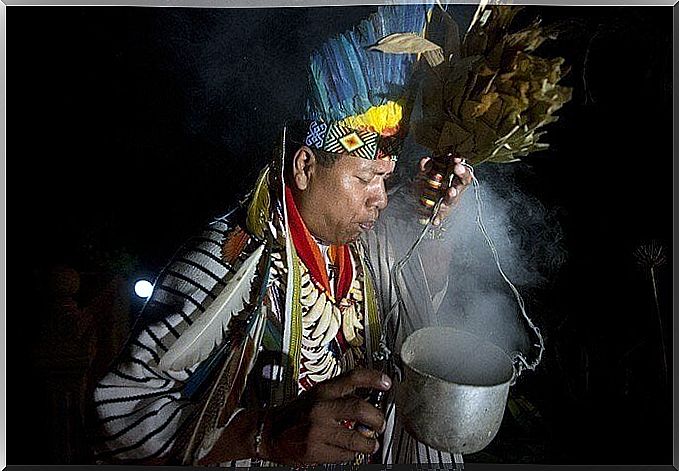The Fright: When The Soul Leaves The Body

If we ask someone what a fright is, they will probably tell us that it is a startle reaction. So when something scares us, we can be scared. We are talking about a sensation that arises from the perception/intuition of a threat.
If we consult Wikipedia, we will find the following definition: “the startle, startle or alarm reaction is a response of the mind and body to a sudden and unexpected stimulus, such as the light of a flash, a loud sound or a rapid movement near the face. In the case of human beings, the reaction includes a physical movement, a contraction of the muscles of the arms and legs and, often, a blink of an eye”.
However, this type of “scare” is not what we will talk about in this article. There are cultural disturbances or concepts of discomfort that are specific to certain cultures or societies. Scare is a disease that exists in popular legends that stir the imagination of some Andean peoples. This is the kind of “scare” we are talking about.
Scare as a cultural concept of discomfort
Culture-dependent syndromes speak of “unusual behavior patterns and disturbing, recurrent and location-specific experiences”. Some of these patterns are considered by the natives as “diseases” or at least as causes of suffering, and most are known by local names.
These syndromes are limited to specific societies or cultural areas, and give coherent meaning to certain sets of experiences and observations.

In this way, fright is a cultural explanation of the discomfort and misfortune prevalent among some Latinos in the United States. It also occurs in people from Mexico, Central America and South America. In the Andean region, fright is known as fright.
This concept is not recognized as a disease category among Caribbean Latinos. But then, what is scare? Scare is an illness attributed to a terrifying event that causes the soul to leave the body.
This division occurs as a result of unhappiness and illness, in addition to the difficulty of playing fundamental social roles. Symptoms can appear at any time: it can be a few days to years after suffering the event that scared you. In extreme cases it can lead to death.
Amazement or fright can be defined as a “psychological impact” of varying intensity that occurs as a result of various factors. Among them, we find those of a supernatural nature, natural phenomena and circumscribed in personal experiences that arise as unexpected events.
As we can see, fright is a nosological entity with a traditional affiliation that extends practically throughout Latin America. However, the ways in which it is known, the propensity to acquire it and the therapeutic practices or preventive rituals have particular connotations related to different geographic regions.
How does fright manifest itself?
There are no specific symptoms that define it. However, symptoms often appear as eating disorders, insomnia or excessive sleep, restless sleep or nightmares, feelings of sadness, low self-esteem, interpersonal sensitivity and apathy.
The bodily symptoms that accompany fright can be muscle discomfort and pain, cold extremities, paleness, headache, abdominal pain, and diarrhea. The events that trigger it are diverse. These events include natural phenomena, animals, interpersonal situations, supernatural entities, among others.
Somatic diseases are usually chronic and very diverse. They are attributed to “loss of spirit” induced, as we said earlier, by intense fear, often supernatural. In some cases, traumatizing events are not experienced personally.
Patients are affected when other people (usually family members) are frightened. Other symptoms include agitation, anorexia, insomnia, fever, diarrhea, mental confusion or apathy. Different studies attribute some cases to hypoglycemia and unspecified organic diseases. It has also been attributed to generalized anxiety disorders or stress caused by social conflicts or low self-esteem.

Types of fright
Three types of fright have been identified called cibih in the Zapotec language (spoken in some regions of Mexico). Each of them has different relationships with psychiatric diagnoses.
Interpersonal fright is characterized by feelings of loss, abandonment and not being loved by the family. The symptoms that accompany it are: sadness, low self-esteem and suicidal thoughts. This type of fright seems to be closely related to major depressive disorder.
Another possibility is that the fright is the result of a traumatic event that played a fundamental role in the configuration of symptoms and in the emotional processing of the experience. In this case, the diagnosis of post-traumatic stress disorder seems more appropriate.
On the other hand, there is also the scare characterized by several recurrent somatic symptoms, for which the person has already sought assistance from several doctors. So, it is considered similar to a somatic disorder.
As we have seen, fright is classified and treated as a whole, in which specific elements can be recognized. Although there is no exact equivalent of this popular disease, it is a condition that can sometimes be confused with other diseases, due to the complexity of the differential diagnosis. In this way, it can even hide different organic pathologies.









